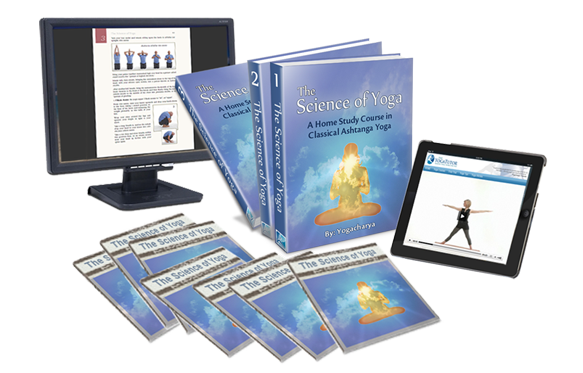[ Excerpt from The Science of Yoga, page 51 ]
The various nerves and nerve plexi which innervate (supply nervous stimulation to) the different organs of the body are stimulated via the different sections of lobular, full breathing.
ADHAM PRANAYAMA: The lower organs of the body are affected by deep, lower breathing. These include the stomach, liver, gallbladder and bile ducts, various blood vessels supplying the abdominal region, the pancreas, adrenal glands, small and large intestines, kidneys and urinary bladder, uterus and prostate. Since this form of breathing regulates the flow of prana below the navel, its benefits extend to ailments of this region as well. It is particularly helpful for menstrual dysfunction in women and problems related to circulation in the lower limbs such as varicose veins, joint inflammation, fluid retention and cold feet. In general, women tend to be poorer abdominal breathers than men. It is very interesting to note that women have historically displayed a greater propensity toward dysfunction in this region as well, such as digestive disturbances, bladder and kidney infections, and of course, menstrual related problems.
MADHYAM PRANAYAMA: Mid-chest breathing stimulates the heart, the trachea, bronchi and lungs, and specifically the internal blood circulation to these organs. This type of breathing benefits heart health by increasing the flow of prana around the heart and reducing the fatty deposits within the vessels in this region. Therefore, it can help to prevent and to remedy heart disease. In general, women tend to breathe more naturally into this region than men, which results in a greater flow of prana in and around the heart region. This healthier energizing of the heart region represents perhaps one aspect of why women display more natural warmth and loving tendencies, characteristics related to the heart chakra, anahata. It also accounts for the fact that men have historically suffered the majority of heart dysfunctions, heart attacks and heart-related diseases.
ADHYAM PRANAYAMA: Upper-chest breathing stimulates the cranial nerves, and in particular the vagus nerve, which also affects the heart and lungs as well as all of the internal organs of the body. Very few people, men and women alike, breathe adequately into the upper regions of the lungs. Because of the lower position of the bronchial tubes supplying air to the upper lungs, this region remains partially filled with stale, residual air, and can only be emptied by conscious adhyam pranayama. As a result, those who suffer from difficulty breathing will often get immediate relief from this practice. Adhyam pranayama also provides relief from dyspepsia (heart burn / excess stomach acidity), is an effective combatant for asthmatic conditions, and helps to remedy many sorts of breathing difficulties.
[Continued...]
---------------------
NOTE: This yoga article is an excerpt from The Science of Yoga, an online yoga training program with streaming yoga videos and 600 pages of step-by-step yoga instruction.

"The Science of Yoga is a course worthy of
leather binding and an honored place in the
finest libraries in the world
... It is indeed a masterful work."
Dr. John Michael Christian
AwakeningWithYoga.com
Learn More About
The Science of Yoga Course
|






